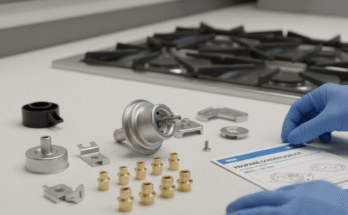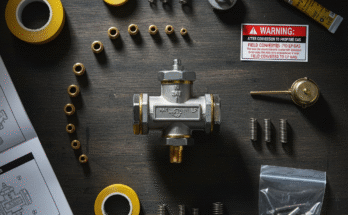When you first hear the term “mud motor kit,” your mind might conjure images of extreme off-roading vehicles. In a technical sense, a mud motor is a specialized outboard engine designed for shallow-water craft like jon boats.Mud Motor Kits
The kit provides the necessary components—like a long shaft and propeller assembly—to adapt a standard small engine (often a commercial-grade single-cylinder engine) into this highly capable, specialized marine propulsion system.
However, the term “mud motor kit” is also frequently used in a different, more common DIY context: the conversion of a standard bicycle into a motorized bicycle or motor-assisted cycle.
These kits, typically featuring small gasoline or electric engines, are popular among hobbyists looking for a cheap, fun, and efficient mode of transportation, often with a robust.
somewhat rugged aesthetic that evokes the spirit of off-road adventure—hence the occasional, descriptive use of the term “mud motor” in this category.
The Heart of the Conversion: Components of a Motorized Bicycle Kit
A standard motorized bicycle kit is surprisingly comprehensive and is designed to turn a conventional pedal bike into a power-assisted machine. The kits generally fall into two main categories: Gasoline-powered (most often two-stroke, but four-stroke options exist) and Electric-powered.
Gasoline Kits: The Classic Power Plant
The most common kits feature a small-displacement gasoline engine, typically between 48cc and 80cc. These kits generally include:
- The Engine Block: A lightweight 2-stroke or 4-stroke engine. 2-strokes are simple, powerful for their size, and cheaper, but they require mixing oil into the gasoline and are louder. 4-strokes are quieter, more fuel-efficient, and reliable, though generally more expensive and complex to repair.
- Fuel System: This includes the fuel tank (often a teardrop shape that mounts to the top bar), a carburetor, fuel lines, and a petcock (fuel valve).
- Drive Train & Clutch: A clutch lever on the handlebars engages a centrifugal or manual clutch that transfers power via a drive chain to a large sprocket mounted on the rear wheel. A “rag joint” or specialized mounting hardware connects the sprocket to the wheel’s spokes.
- Ignition & Control: A CDI (Capacitor Discharge Ignition) unit, spark plug, a twist-grip throttle with an integrated kill switch, and an exhaust pipe (muffler).
- Mounting Hardware: Brackets, bolts, and specialized adapters to secure the engine block to the bicycle frame (typically the V-frame area).Mud Motor Kits
Electric Kits: Modern and Silent

Electric conversion kits are gaining popularity due to their environmental friendliness, lower noise, and often simpler installation. They transform a pedal bike into an e-bike, sometimes with significantly more power than legal limits allow. Key components are:
- Motor: Typically a hub motor (mounted in the center of the front or rear wheel) or a mid-drive motor (mounted at the crank/pedals). Mid-drives offer better torque and efficiency but are more complex.
- Battery: A lithium-ion battery pack, often mounted on the down tube or rear rack. This is the single most expensive and heaviest component.
- Controller: The “brain” of the system, which manages power flow from the battery to the motor and controls the assist level.
- Throttle and/or Pedal-Assist Sensor (PAS): A twist or thumb throttle allows for motor-only power, while a PAS senses when you are pedaling and provides proportional power assistance.
- Display: A small LCD screen to show battery life, speed, distance, and assist level.
The DIY Experience: Building Your Motorized Bike
The allure of a motorized bicycle kit lies in the Do-It-Yourself (DIY) satisfaction. It’s a project that combines mechanics, problem-solving, and the reward of riding your own custom-built machine.
Installation and Challenges
Installing a kit requires a certain level of mechanical aptitude. Gasoline kits, in particular, involve more nuanced steps:
- Mounting the Sprocket: Attaching the large drive sprocket to the rear wheel’s spokes is often cited as the trickiest step, requiring careful alignment and adjustment to prevent wobble.
- Engine Mounting: Securing the engine in the bicycle’s V-frame with enough clearance for the pedals and chain. This may require frame adapters for bicycles with oversized tubing.
- Clutch and Throttle Setup: Adjusting the clutch cable for smooth engagement and setting up the twist throttle.
Common Challenges often involve vibration, which can loosen bolts, and fine-tuning the carburetor for optimal performance. Builders frequently upgrade stock components like the spark plug, exhaust, and carburetor to maximize power and reliability.Mud Motor Kits
Performance and Ride Quality

The resulting motorized bicycle offers a significant power boost. Gasoline kits can often achieve speeds of 25-35 mph, turning a grueling uphill commute into a simple cruise. Electric kits are generally governed by legal limits (often 20 mph or 28 mph, depending on the class), but deliver instant, silent torque.
Safety, Maintenance, and the Law
The most critical aspects of owning a motorized bicycle are ensuring safety and adhering to local regulations.Mud Motor Kits
Safety First
Adding an engine drastically increases the bicycle’s speed and stress on the frame and components. Therefore, essential safety upgrades include:
- Brakes: Ensure your bike has powerful, well-maintained disc brakes if possible, as standard caliper brakes may not be sufficient for the higher speeds and added weight.
- Frame Integrity: Use a bike with a robust, high-quality steel or aluminum frame designed to handle stress. As the constant vibration of a gas engine can strain weaker frames.
- Protective Gear: Always wear a helmet and appropriate protective clothing. As you are operating a motor vehicle, not just a bicycle.
Maintenance
Routine maintenance is essential, especially for gasoline kits. Two-stroke engines require the correct fuel-to-oil mixture to prevent seizure, and both gas and electric bikes need regular checks on the chain, brakes, and all mounting bolts (due to vibration). Electric batteries should be charged correctly and protected from extreme temperatures to prolong their life.
The Legal Tightrope
This is where the excitement can quickly run into trouble. Laws regarding motorized bicycles, often called mopeds, motorized scooters, or power-assisted bicycles (PABs), vary dramatically by country, state, and even municipality. Ignorance of the law is not an excuse, and riding an illegal vehicle can result in fines and impoundment.
General Legal Considerations (You must check your specific local laws):
| Feature | Typical Regulation Focus (Varies Widely) |
| Engine Displacement (Gas) | Often restricted to 50cc or less to avoid full motorcycle classification. |
| Power Output (Electric) | Usually limited to 750W or less (in the US) or 250W (in the EU and other regions). |
| Top Speed (Motor-Only) | Often limited to 20 mph (32 km/h) or 28 mph (45 km/h). |
| Pedals Required | Most legal classifications require fully operable pedals. |
| License/Registration | Vehicles under the legal limits may not require a license, registration, or insurance, but if they exceed the limits, they are often classified as mopeds or motorcycles, requiring all three. |
Conclusion: Is a Mud Motor Kit Right for You?

Whether you’re looking for the simple, silent boost of an electric conversion or the mechanical thrill of a classic gas-powered “whizzer,”Mud Motor Kits
a motorized bicycle kit offers a unique blend of transportation, hobby, and custom engineering.
The mud motor kit, in its bicycle context, represents the spirit of DIY innovation and the desire to create a practical, powerful, and fun machine. If you have the mechanical inclination, a suitable donor bike, and a commitment to safety and legality,




